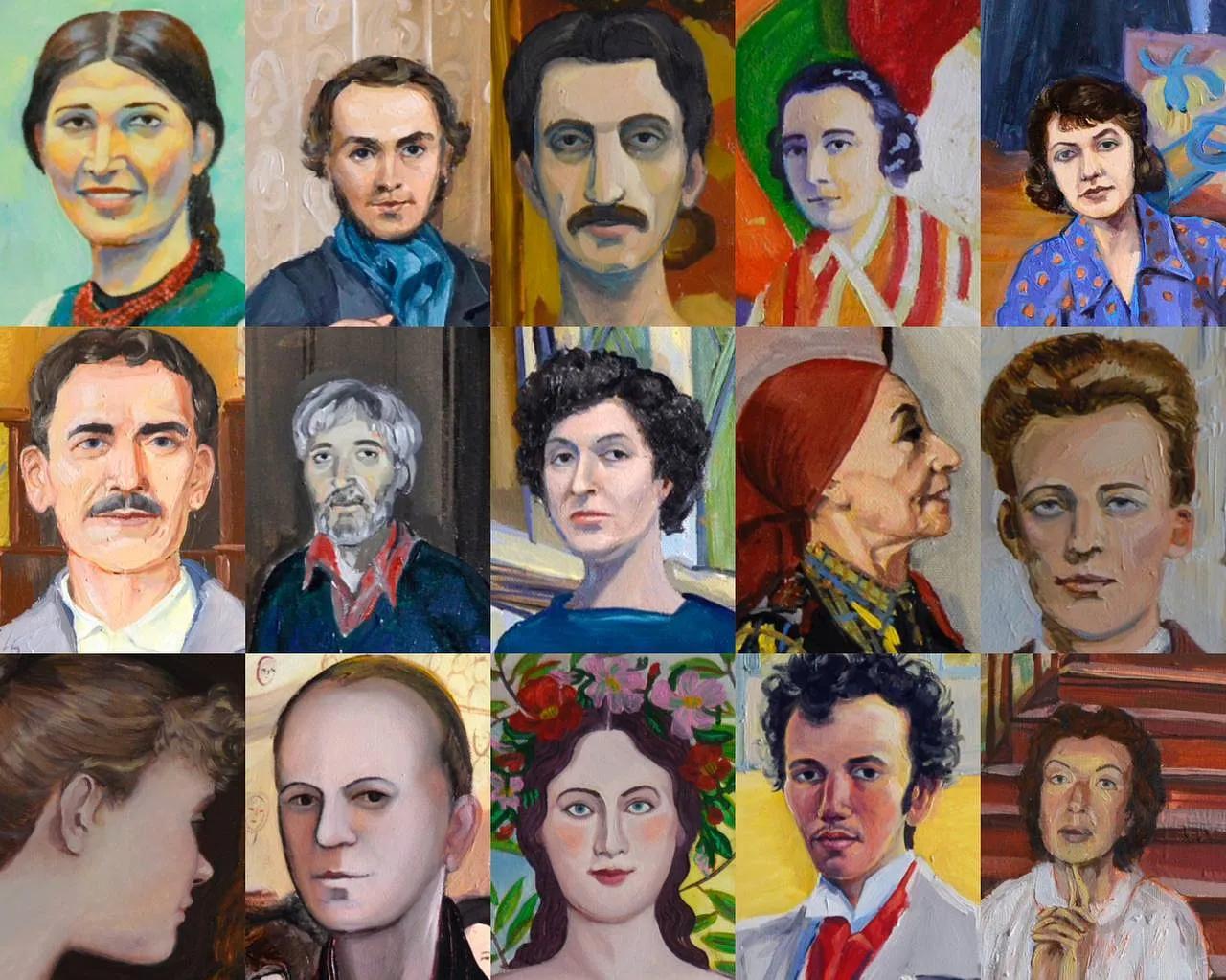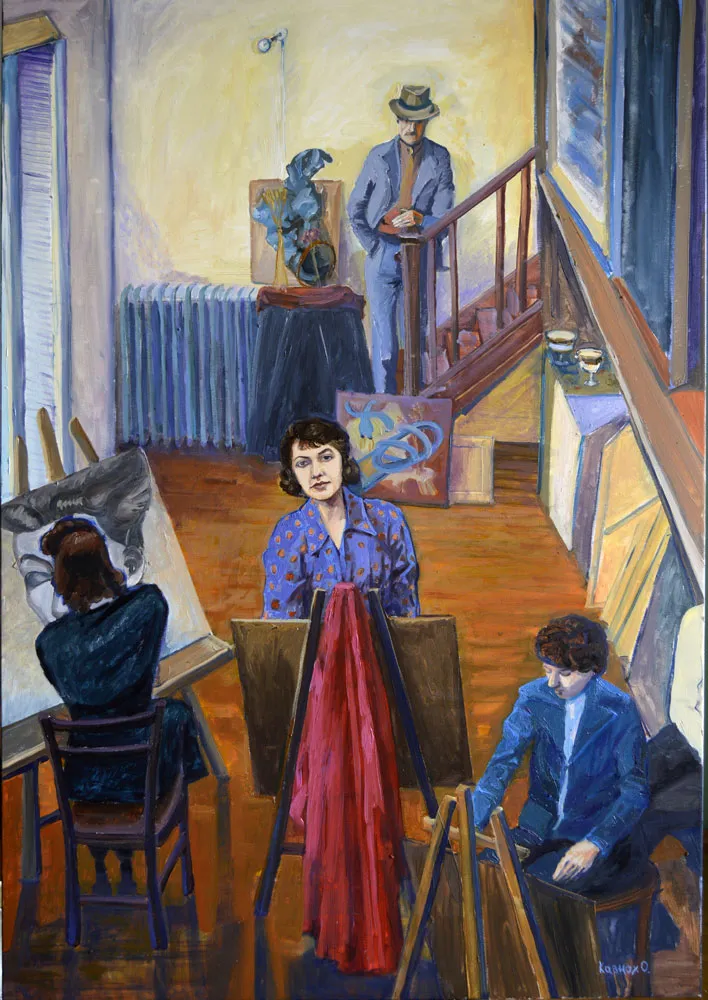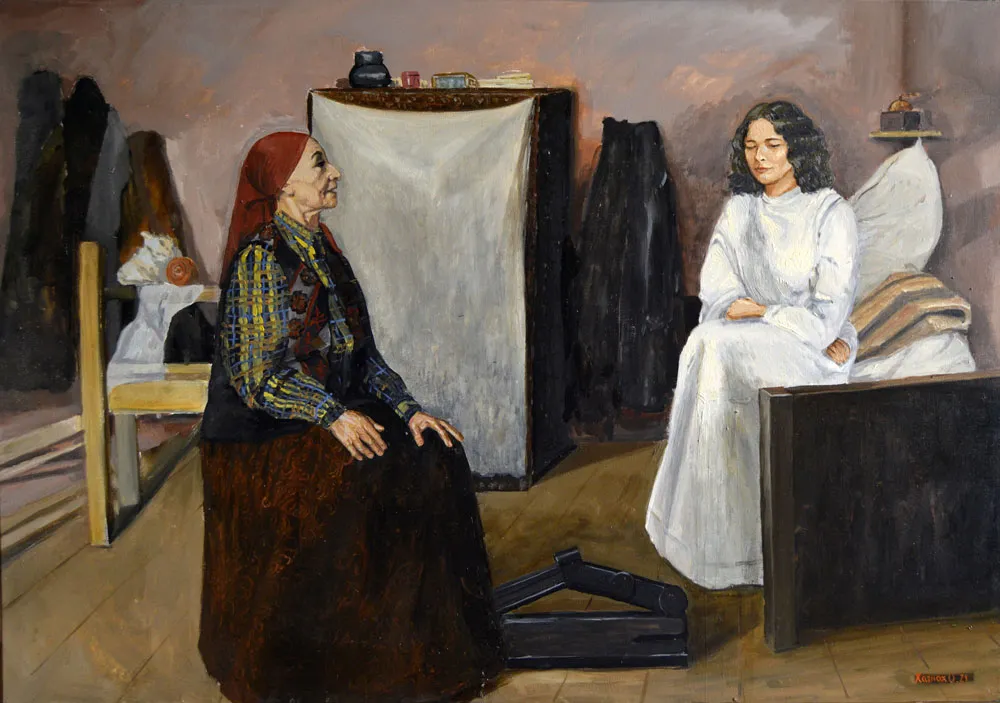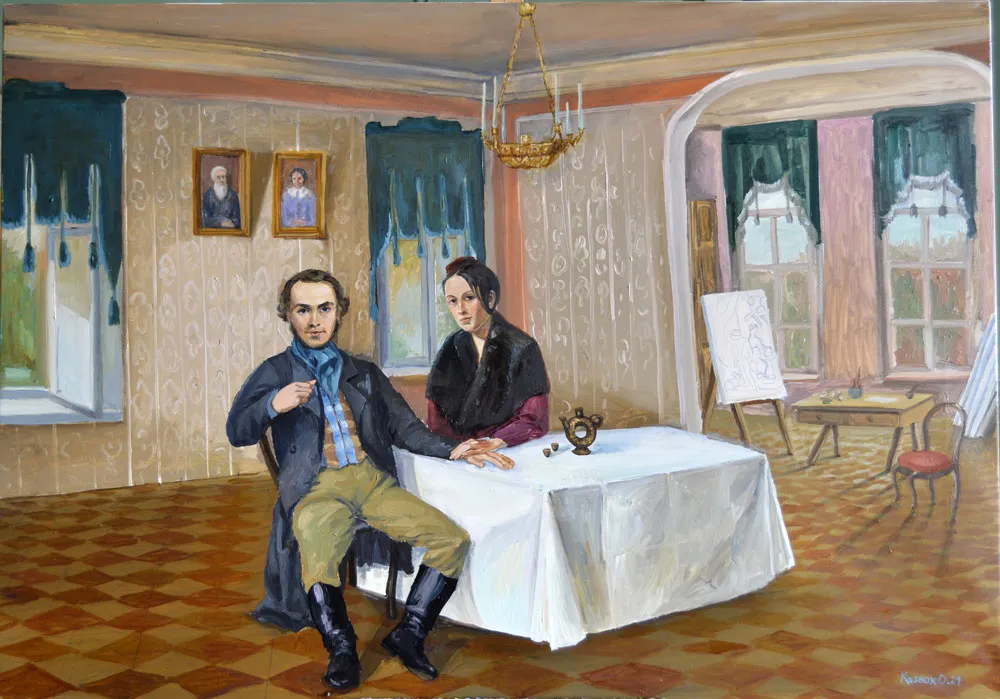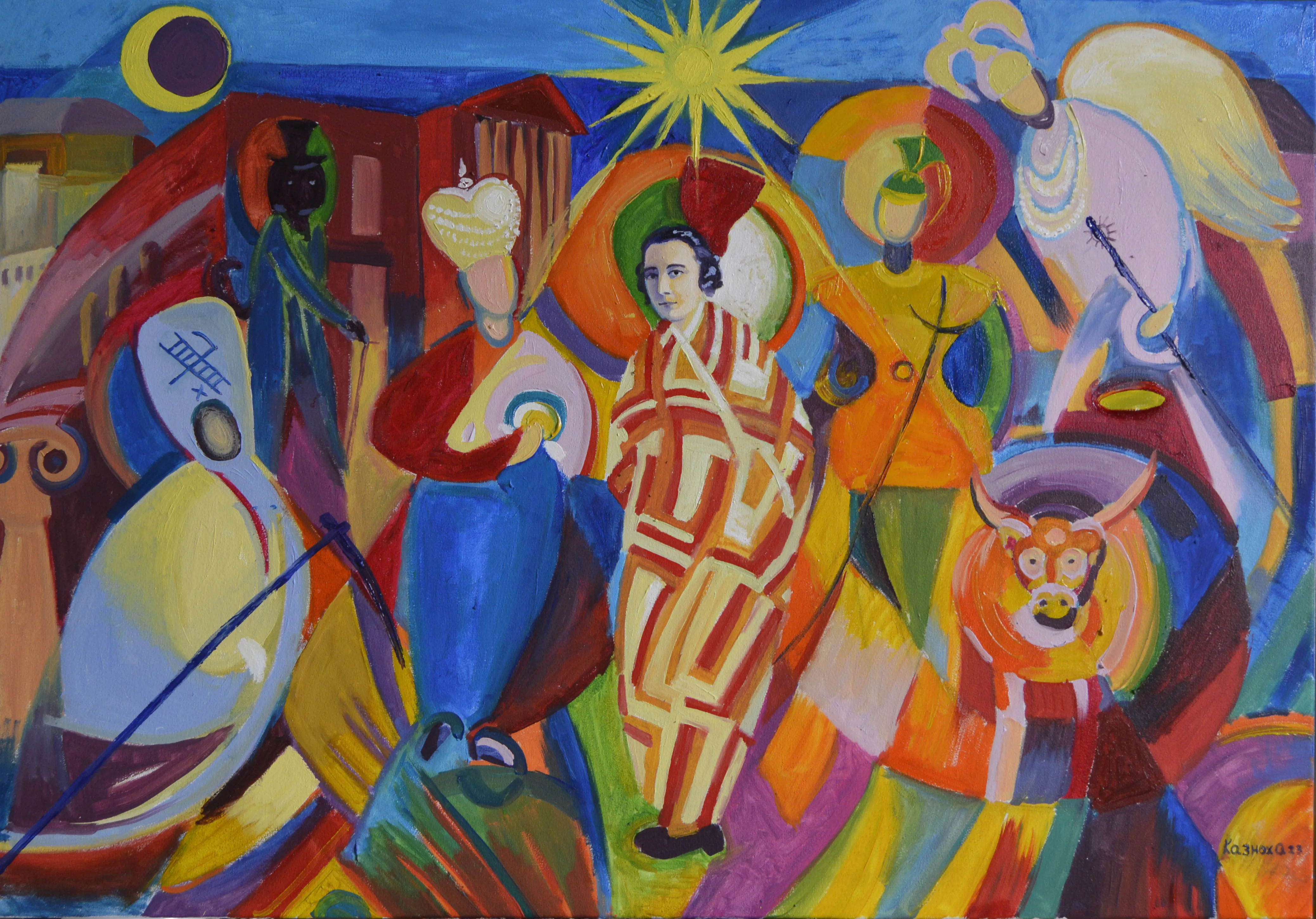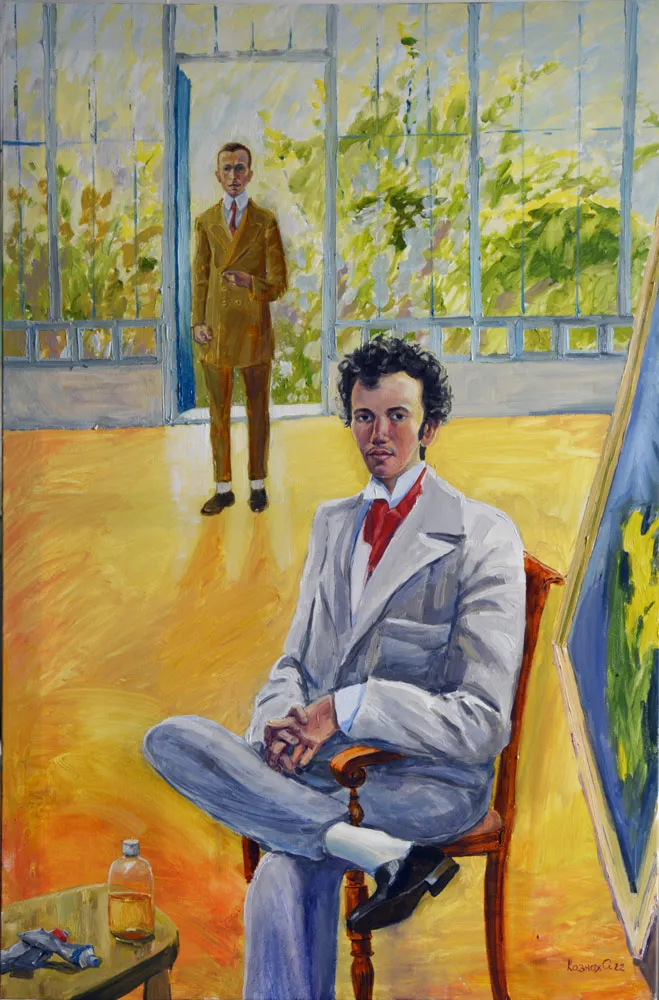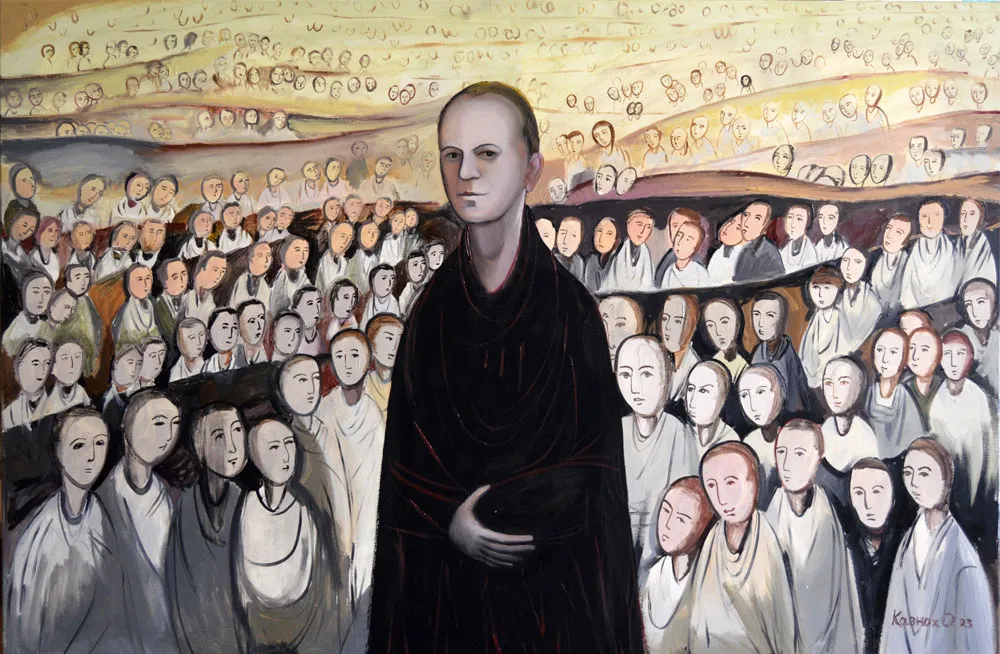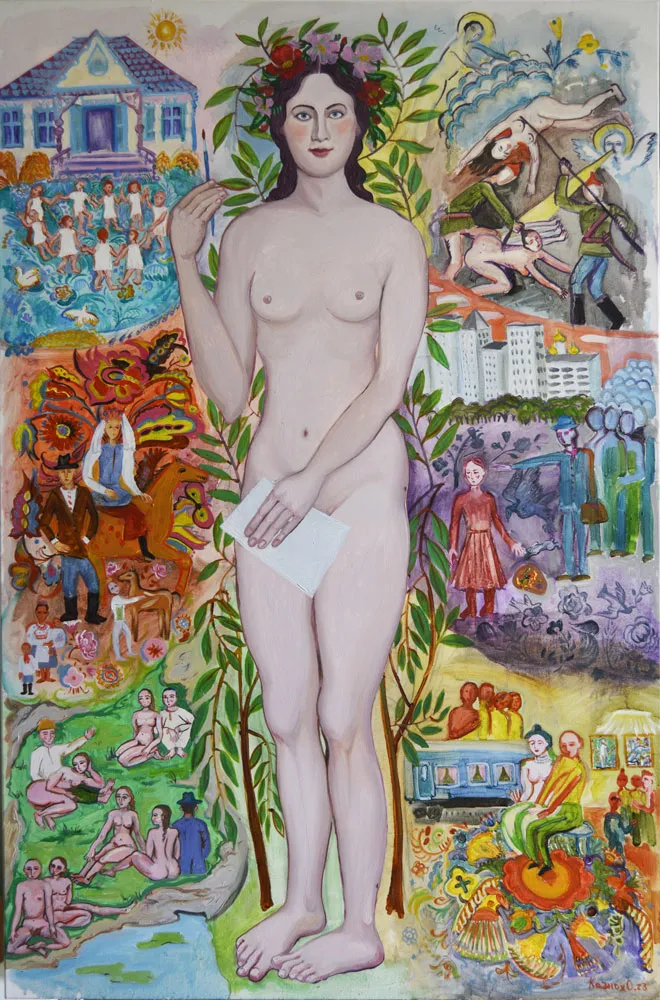Художник в історії
Львів
2024
В 2021 році я розпочала серію портретів відомих митців з минулого, щоб дослідити як час і місце вплинули на їх творчу реалізацію, славу та роль в історії. Я намалювала художників і художниць, почергово:
Луїза Невельсон, Олександра Екстер, Аршил Горькі, Катерина Білокур, Яків Гніздовський, Тарас Шевченко, Олександр Богомазов і Олександр Архипенко, Лі Краснер, Федір Кричевський, Маргіт Сельська, Олександр Мурашко та Модест Сосенко, Марія Синякова, Андрій Ментух, Марія Башкірцева, Соня Делоне.
Я закінчила цю серію в 2023. А тепер дивлюсь на неї іншими очима. Чи могла я колись подумати, що ми всі житимемо в підручнику з історії, що страждання від російського імперіалізму, геноцид, еміграція, самовизначення і самоусвідомлення своєї національної ідентичності будуть такими актуальними темами з 24 лютого 2022 року в моїй країні, як і в ті часи коли жили герої моїх портретів?
Я запропонувала кожному своєму герою – художнику і художниці альтернативний життєвий сценарій. Я фантазую про те, що якщо було б інакше? Як в кіно, в якому знімають одного і того самого героя, що поводиться по іншому в певний момент життя і все відбувається по іншому.
